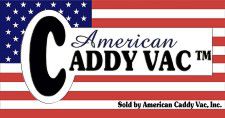Air duct cleaning is a misnomer. In actuality, the entire HVAC system should be cleaned. Failure to clean all components of the system can result in recontamination of the entire system, thus minimizing the benefits of cleaning.
Just as you wouldn’t clean only half of your living room floor, you also would not want to clean only part of your HVAC system. NADCA recommends cleaning the entire HVAC system, including the following components:
- air ducts
- coils
- drain pan
- registers
- grills
- air plenum
- blower motor and assembly
- heat exchanger
- air filter
- air cleaner
There are two key components to HVAC cleaning: breaking contaminants loose, and collection of contaminants.
Breaking Contaminants Loose
Properly cleaning HVAC systems requires removing the sources of contamination. Source removal begins with the use of one or more agitation devices designed to loosen contaminants from the surfaces within the heating and air conditioning system. Examples of agitation devices include: brushes, air whips and compressed air nozzles or “skipper balls.” Agitation can also be achieved through hand-brushing or contact vacuuming.
Collection of Contaminants
During cleaning, the entire HVAC system is placed under continuous negative pressure (a vacuum) to prevent the spread of contaminants. Continuous negative pressure allows very fine particles to be removed from the system as they become airborne, ensuring that these particles are not released into the living space when the system is turned on after cleaning. This negative pressure also serves to extract the loosened contaminants, which are collected and removed from your home.
System Access
HVAC system cleaning is not a complex process, but each job is unique. Where possible, access to duct interiors should be made through existing openings such as supply diffusers, return grills, duct end caps and existing service openings. Cleaning technicians may need to cut access holes in the duct work in order to reach inside with various cleaning tools. Creation of these service openings, and their subsequent closure, requires craftsmanship and professional skills.
Equipment Requirements
There is a wide variety of equipment available to HVAC cleaning professionals. Both truck-mounted and portable vacuums can be used to stop the spread of contaminants and get the system cleaned to the NADCA Standard.
Antimicrobial Chemicals
Antimicrobial chemicals include sanitizers, disinfectants and deodorizers that can be applied to nonporous surfaces in HVAC systems to address microbial contamination and help control odors. Only chemicals registered with the United States Environmental Protection Agency (EPA) can be used. These products should only be considered after mechanical surface cleaning has been performed and if the need for such treatment has been deemed necessary.
Find a Professional
When you’re ready to tackle those air ducts, make sure you choose a qualified contractor to ensure the job is done right. NADCA makes it really simple for homeowners to find a certified air duct cleaning professional. All it takes is a zip code to search our online directory to find a NADCA member in your area.
(Reprinted with permission from NADCA.com)
